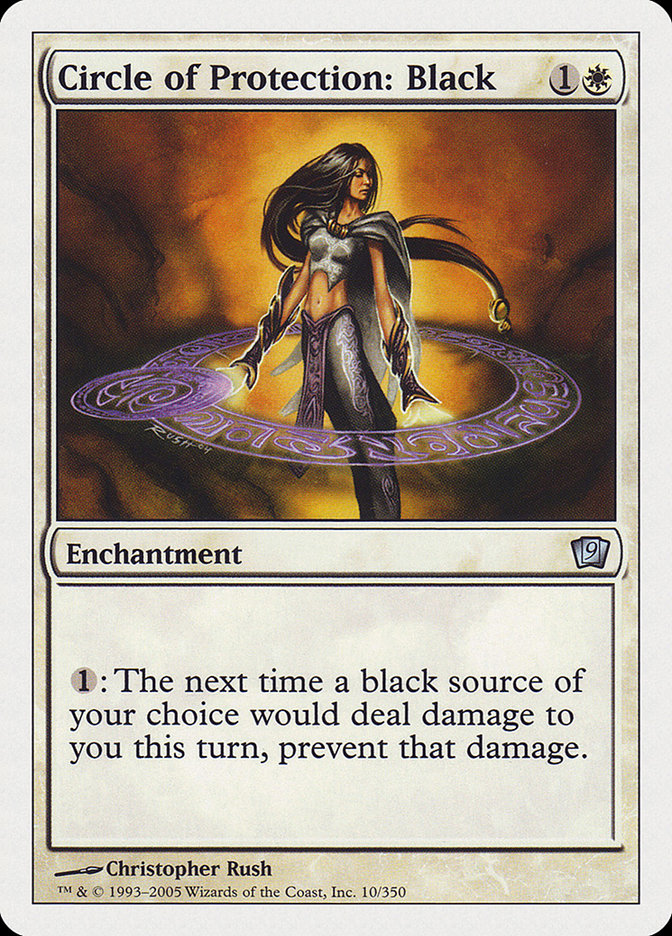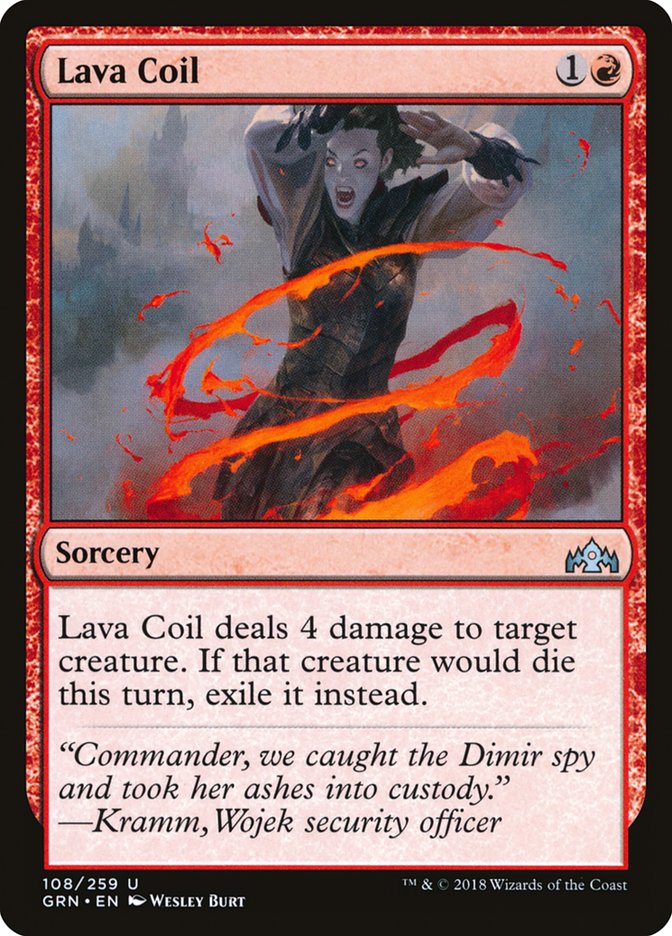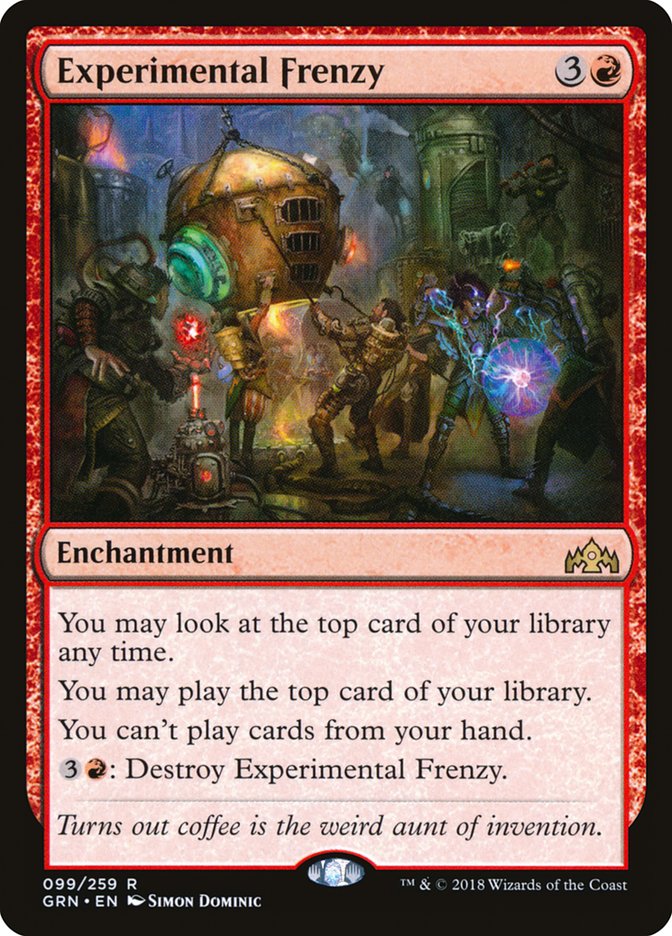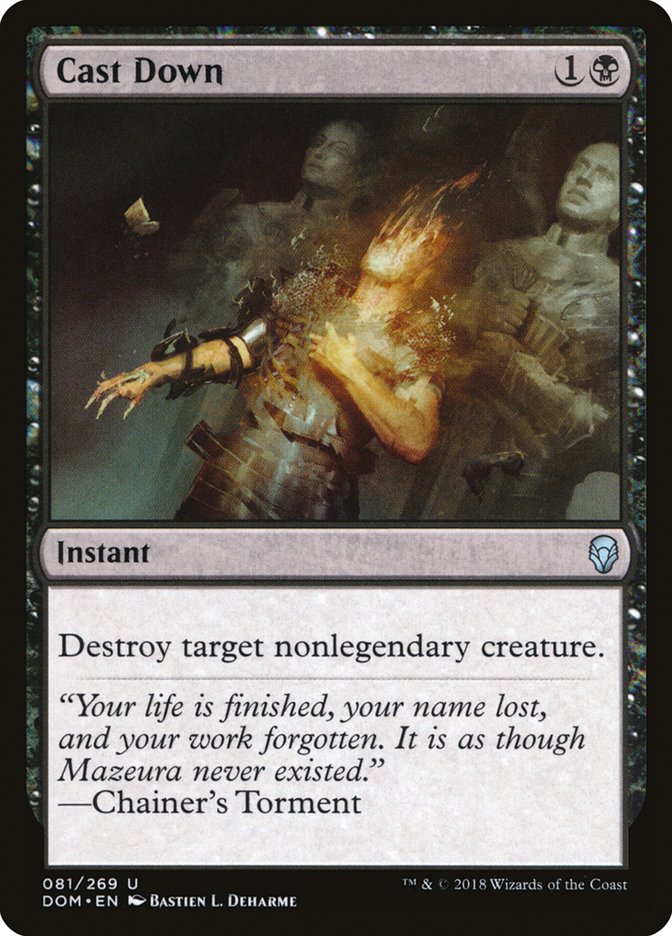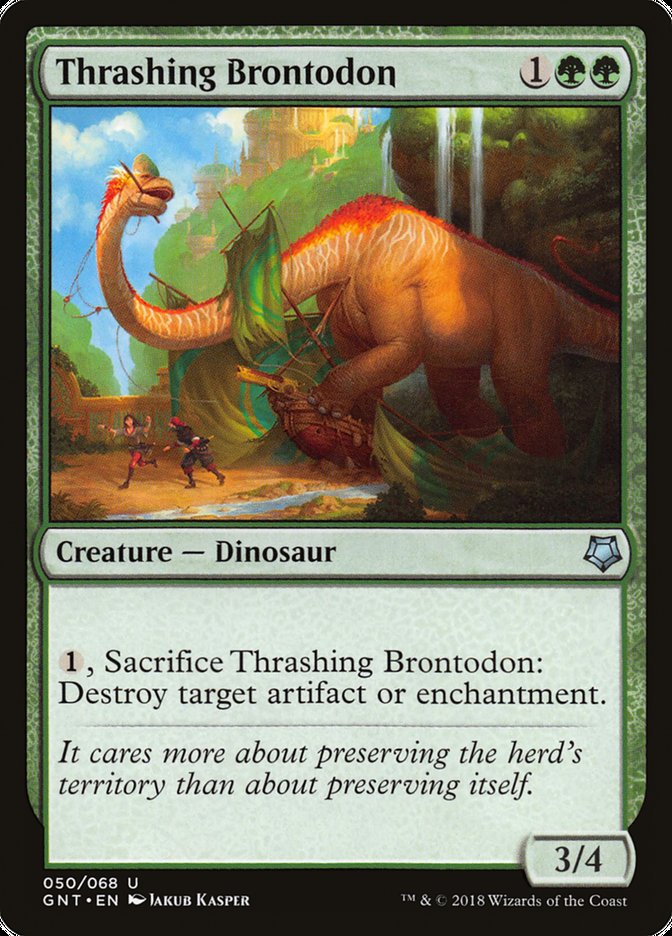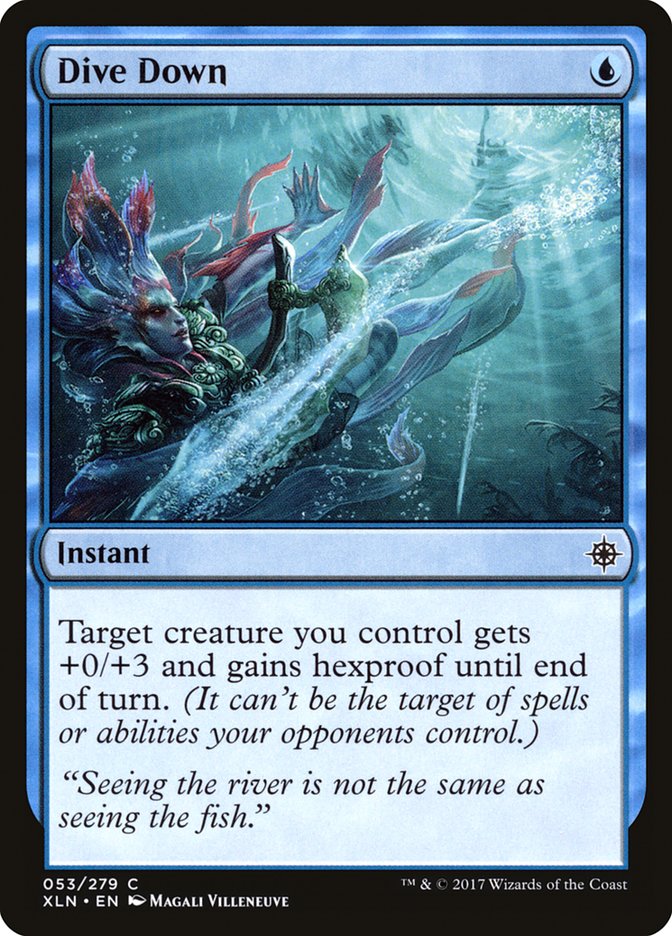Are you ready to climb the ladder?
Magic Arena is here and I’m absolutely loving it. Except for how the
economy works (FTP is always weird), Arena is a slam dunk. It looks sleek,
has all the functionality of Magic Online, and gives viewers on Twitch the
ability to actually follow along with what’s happening. And aside from a
few small hiccups, I’m incredibly excited about the future of Magic.
At this very moment, I’m watching the Twitch Rivals Magic Gauntlet, a
$10,000 tournament happening on a Tuesday on Magic Arena along with 9,000
other people. Around 35,000 people are watching Magic, on a Tuesday. There
are around ten or so streamers with over 1,000 viewers. If this is the
accessibility we have to look forward to with a Mythic Invitational, I’m
absolutely giddy at the prospect of how many new people we’re going to get
into this spectacular game.
If you can’t tell yet, I’m a pretty big fan of Magic Arena. And one of the
major announcements as of late is that their ladder system, which could be
a potential path to playing high-level Magic, is going to use the Best of
One (Bo1 from here on out) format for competitive play. Along with this
announcement came a figure: 97%. That’s the percentage of games on Magic
Arena played in the Bo1 format. Coming from someone with about fifteen
years of experience playing with sideboards, this change is rather
daunting.
But I love it. One of the first things that drew me to Magic Arena was the
fast pace. One-game matches allowed me to return to the best part of
drafting: picking the cards. And if we’re talking about Constructed, Bo1
has some much deeper implications.
Let’s start at the beginning.
Mana Screw and the Algorithm
It’s no secret that one of the most frustrating parts of Magic is mana
screw. Not drawing enough lands, or drawing too many lands, can lead to
some not-so-exciting games. Those of us who’ve been playing Magic for a
while understand that this aspect is just part of the game. This is what
helps create variance. This aspect of Magic, the variance, allows someone
like Jon Finkel to lose to someone like me. But occasionally, we get a
mulligan to five in the finals of the Pro Tour and everything looks like
crap.
Recently, Wizards of the Coast tried to explain an algorithm they created
for Magic Arena in the Bo1 games. While this isn’t exactly what the
algorithm does, here’s how I understand it:
When you would draw your opening hand, the game client looks at two
possible opening hands, then chooses one for you that most closely matches
the land-to-spell ratio in your deck. That means you’re more likely to get
a hand that plays out smoothly. Now, this obviously won’t help as the game
progresses, as you’re still destined to draw five land in row if you ever
keep a five-land hand, but it does lead to more interactive games on
average. This is a huge plus as a spectator, as having decks fail to
function is some of the most boring, awkward stuff I’ve ever seen.
No More Sideboarding
One big complaint I’ve heard from people is that the lack of sideboarding
is going to water down the experience. “This is competitive Magic, after
all. Sideboards should be included!” Let me start by saying a few things
that I expect to be true but aren’t necessarily confirmed.
-
Bo1 will be Arena-only (and maybe Ladder-only). All “tabletop”
tournaments will use the classic Bo3, using sideboards. -
Having Bo1 on Arena will open new avenues of deckbuilding and
tournament structures. -
It’s okay, in my opinion, to have tabletop and Arena ladder
function differently.
If you were scared of Arena’s Bo1 ladder supplanting tournament Magic, the
recent Twitch Rivals Gauntlet for Magic Arena should alleviate some of that
tension. It’s already clear that we have the capability to run tournaments
via Arena (albeit in a roundabout fashion) using Bo3.
Personally, I’ve never been a huge fan of sideboarding. When I was younger,
I always thought Circle of Protection: Black was pretty messed up, but also
pretty narrow. Why would I want that in my deck? Just to hose my friend’s
Mono-Black deck? That didn’t seem very fair. It wasn’t until years later
that I discovered tournaments, and sideboarding, was a thing that existed
at all. From someone just getting into the game of Magic, seeing a hoser
card for the first time just makes you feel all icky inside.
There’s also the argument that sideboarding is cumbersome and adds a lot of
extra time to your gameplay experience. In this fast-paced world of digital
gaming, things that are cumbersome or slow down your overall experience
should be mitigated. And if we’re talking about hours and hours of grinding
on a ladder, getting rid of sideboards altogether seems like a dream come
true. Imagine trying to rank up though this style of system playing a
control deck! It would take forever to hit Mythic! On top of that,
“leveling up” takes considerably less time when you only play one game at a
time as opposed to two or three.
But as someone who has a deep investment in tournament Magic, I would never
want sideboards to go away completely. I just think that, if you’re going
to create a ladder for people to grind on, making that experience as smooth
and pleasurable as possible is ideal.
Building Decks for Bo1
When approaching a new format for constructing decks, it’s important to
understand exactly what your goal is. If we’re grinding on a ladder,
there’s a good chance we just want to play a high amount of actual games.
That means leaning aggressive, as the games tend to be over quickly one way
or another. But what happens when your aggressive deck starts losing?
Playing a high amount of games doesn’t do much of anything if you’re
winning less than 50% of the time! So let’s approach this from a fresh
angle.
Level 1
First, if you’re building a deck for a Bo1 format, the “obvious” answer is
to play something fast. You want to play a lot of games so that you can
ladder up quickly. Plus, people are going to have to adjust to this new
format, so playing something low to the ground can get you a lot of free
wins in the early portions of a format. We’ve seen this historically with
Mono-Red in the opening weekends of a new Standard season, as people are
still trying to brew with all the new mechanics and cards. It’s much more
difficult to build a functional deck around Chromatic Lantern than it is
Legion Warboss!
An old adage that comes back time and time again: there are no wrong
threats, only wrong answers. And in a Bo1 scenario, if your opponent has
the wrong answer, that’s all she wrote! There are no second chances or
sideboard games. No Timely Reinforcements to overwhelm your Mono-Red Aggro
deck. If your opponent wants to punish your aggressive strategy, they’re
going to have to sacrifice percentage points against the rest of the field.
Here’s a good starting point for Mono-Red in a Bo1 format.
Creatures (20)
- 4 Fanatical Firebrand
- 4 Ghitu Lavarunner
- 4 Goblin Chainwhirler
- 4 Viashino Pyromancer
- 4 Runaway Steam-Kin
Lands (22)
- 22 Mountain
Spells (18)

When you’re playing an aggressive deck in Bo1, you must find the right
balance of speed, consistency, and ability to go long if need be. Lava Coil
is our concession to the Izzet Drakes deck, acting as a clean answer to
Engima Drake and Crackling Drake, both having four toughness and usually
dodging traditional burn spells. And while Lava Coil is usually dead
against Jeskai Control or the like, I don’t think that will be much of a
problem in the early stages of this new Constructed format.
It’s possible that, as the metagame starts to take shape, drastic changes
will be made to this archetype. Experimental Frenzy, for example, is very
good against decks with a lot of removal or controlling elements. Against
an aggressive opponent, there’s a decent chance that Experimental Frenzy is
too slow or ineffective. Oftentimes, if your four-mana spell doesn’t have
an immediate impact on the game, you’re going to be too far behind in an
aggressive matchup for it to matter. Even if you catch back up on cards the
next turn, chances are that the damage is already done.
This particular version of red loads up on removal so that Experimental
Frenzy is more likely to have an impact. The higher your life total when
you cast it in an aggressive matchup, the more likely it is to establish
dominance.
Level 2
The next step in building decks to compete in a Bo1 scenario is to try your
best to sit right on top of these hyper-aggressive strategies. If your deck
is just a little bit slower than these decks, utilizing a slightly higher
power-per-card ratio, it could be a recipe for success. This is the
“midrange” area of Magic, though that moniker starts to lose a bit of
meaning when you lose the ability to sideboard. After all, one of the
biggest strengths of a midrange strategy is that you can easily take the
role of control or aggro given the opposing deck. Without a sideboard, your
“midrange” deck just becomes a collection of cards that are trying to sit
on top or go under your opponent, depending on how you build your deck for
the predicted metagame.
If I were to build a midrange strategy, with a nod toward beating
aggressive decks, it would probably look something like this:
Creatures (24)
- 4 Llanowar Elves
- 1 Druid of the Cowl
- 2 Carnage Tyrant
- 4 Wildgrowth Walker
- 4 Merfolk Branchwalker
- 2 Thrashing Brontodon
- 4 Jadelight Ranger
- 3 Ravenous Chupacabra
Planeswalkers (3)
Lands (23)
Spells (10)

As you can see, we’re not going over the top to beat these aggressive
decks. We’re just slanting our maindeck a bit in order to give us some
breathing room. Cards like Cast Down are great for helping contain cheaper
threats, while also giving us some much-needed interaction against decks
like Mono-Blue Aggro.
The other card that I want to put an emphasis on is Thrashing Brontodon,
which doesn’t usually see a ton of play. With the aggressive decks relying
so heavily on stuff like Conclave Tribunal or Experimental Frenzy, having a
solid threat with the utility to destroy those annoying artifacts and
enchantments is huge. Plus, with cards like Search for Azcanta and Treasure
Map gaining popularity, it might be time to start looking toward maindeck
Reclamation Sage.
It’s no secret that Wildgrowth Walker is very good against aggressive
strategies. If you draw one early and can protect your life total, it gives
you a lot of time to find your big finishers. Sweeping your opponent while
pumping your biggest threat via Finality is great when your opponent goes
wide with History of Benalia and the like. Plus, if your opponent is on
Mono-Red, gaining those precious life points effectively counters much of
their burn strategy!
The problem? Running into Level 3 decks.
Level 3
The third level of building decks in a Bo1 scenario is trying to beat the
Level 2 strategies. I would consider something like Jeskai Control or Izzet
Drakes to be a part of this category. But what if we combined the two?
Creatures (10)
Lands (22)
Spells (28)

The idea here is to maintain enough tools to interact positively with decks
like Mono-Red while still being able to go over the top of Golgari. Cards
like Deafening Clarion, which is our only white card, give us some
much-needed breathing room against aggressive decks. The upside of
splashing Deafening Clarion here is that it’s also stellar against most
builds of Golgari. Aside from the errant Thrashing Brontodon or potentially
annoying Midnight Reaper, Deafening Clarion cleans up all their creatures
that cost less than five mana.
On top of being a solid sweeper, Deafening Clarion gives us the potential
to gain a ton of life while racing some of these more aggressive
strategies. Life is good when you get to use both sides of Deafening
Clarion to full effect.
There are some sacrifices, of course. Losing Spell Pierce in order to make
room for Deafening Clarion is not ideal. But if you want to splash a third
color, giving your deck an additional angle of defense, some sacrifices
must be made. Unfortunately, Spell Pierce is a little bit worse in the
current metagame than Dive Down, as the priority of these spells is to
protect your Drakes from removal spells. While Spell Pierce has the added
benefit of countering big spells like Teferi, Hero of Dominaria or an
on-curve History of Benalia, Dive Down gives you consistency in what you’re
trying to do. Cast Engima Drake, protect it, and attack for lethal over two
or three turns while containing all your opponent’s threats.
It’s also important to note that adding white mana to the deck inherently
increases our red mana sources while decreasing our blue mana sources, so
if we’re going to cut a card, it needs to be blue.
Climbing the Ladder
It’s important to remember that not every type of Magic has to be catered
to everyone. Personally, I think the Bo1 format is ideal for digital play.
You want as many people playing as many games as possible on your client.
Waiting three minutes between games while your opponent takes forever to
sideboard isn’t exactly ideal.
Should there be a Bo3 ladder? Honestly, I don’t think so. I played a good
bit of Hearthstone; it can take quite a while to grind your way to the top
when playing one-game sets. I can’t imagine trying to hit Mythic rank while
having to play more than twice as many games as the Bo1 ladder. And I think
once you start trying to grind yourself up the ladder, you’ll understand
where I’m coming from here.
Is Bo1 the future of Magic? I honestly don’t think so. It will be something
that streamers do on the regular. It’ll be ideal for drafting, keeping
audiences and players interested over short bursts of time. But in the long
run, tournaments should use the Bo3 format, with sideboards, as a way to
separate itself from other game modes. Tournaments are a battle, and it
should feel like one. Tournaments should be designed to be harder, where
the Ladder should be designed for a more user-friendly, easy-going
experience. Both game modes have their strengths and weaknesses, and
hitting both markets is important for customer growth.
Over time, the Bo1 ladder system will draw in more casual players, who will
in turn learn about major tournaments, sideboarding, and deeper strategy.
And that will ultimately lead to more people playing live Magic. In the
end, more eyeballs on the product is a good thing. Bo1 will lean more
casual, but there’s a darn good reason that 97% of all games played on
Arena thus far have been Bo1, and I’m just as guilty as all the other
people choosing the “Quick Draft” option.
Arena was the fast pace. One-game matches allowed me to return to the best
part of drafting: picking the cards. And if we’re talking about
constructed, Bo1 has some much deeper implications.
I’ll leave you with this: the Bo1 format isn’t “easier” than traditional
competitive Magic. It’s just different. The sacrifice to allow people to
play more games is to eliminate sideboarding, but there’s potential in a
Bo1 tournament structure. Conquest Mode, where you bring 3-5 decks to the
table and must win with every one of them to win the match, is something
they experimented with during the Player of the Year playoff match between
Seth Manfield and Luis Salvatto.
In this game mode, instead of winning a best of three games with one deck
and a sideboard, players brought multiple decks and had to run them up
against an opponent who brought just as many decks. The first person to win
with all their decks wins the match! You can also do it the opposite way,
where losing with your deck means it’s “out.” We’ve seen something like
this on the Super Leagues run by Randy Buehler, though never in a Bo1
scenario.
Now personally, I don’t think it’s reasonable to expect someone to bring
3-5 different Magic decks to a live tournament. The cost would just be too
expensive. However, on Magic Arena, the “cost” of any one card is static
and having someone bring more than one deck to a tournament isn’t all that
unreasonable. Is this the future of tournament Magic? Probably not, but it
is certainly unexplored territory, and I could definitely see a tournament
series run on Magic Arena that utilizes this style of game mode in order to
keep things fresh for the audience.
All I know is that the future of Magic is bright. After today, I’m
confident that Magic Arena is the future. Just like Magic Online in 2003,
we’re stepping into a new era, and I’m excited to see where we go from
here.


